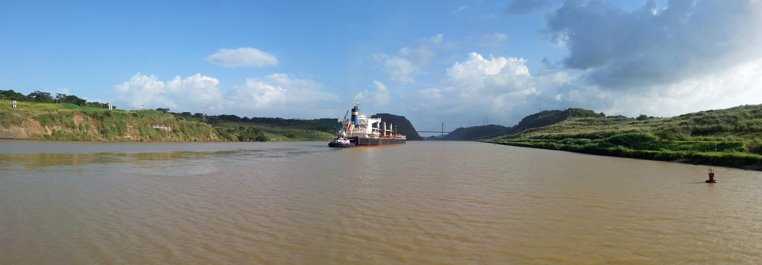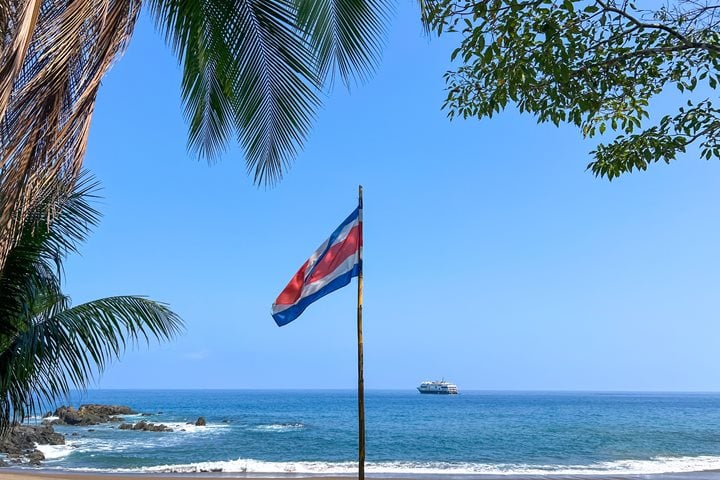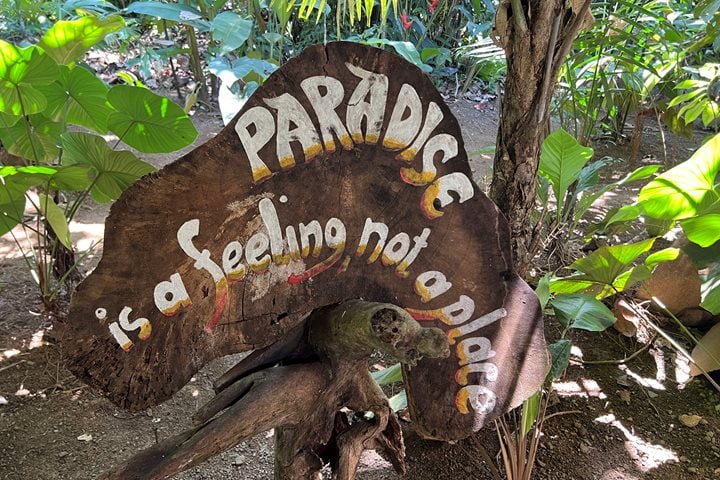Welcome to Panama! We are located at the narrowest section in the Americas, a stretch of land of only 50 miles. A unique land connection, where ethnic groups and natural organisms are a bridge between North and South America.
Last night we began exploring the majestic engineering of the locks in the Panama Canal. There are three main chambers with a width of 110 ft. (33.53 m) and 1050 ft. (320 m) long, each filled with around 25 millions of gallons of water. During the process, we were raised 85 ft. above sea level in order to reach Gatun Lake. This lake was created when Chagres River was dammed back in 1912, submerging the forest and river valleys creating this inland body of water.
By 5:00 a.m. a new pilot arrived to National Geographic Sea Lion and directed us to our next stop at Barro Colorado Island. After a welcome talk by Dr. Egbert Giles Leigh, a prominent scientist of this research facility, we were ready to discover the trails by foot or by riding our expedition landing crafts. All sorts of wildlife were spotted during our outings: American crocodiles, keel-billed toucans, and in my case, mantled howler monkeys were active throughout the walk at Snyder/Molino trail. We returned to the National Geographic Sea Lion by noon, when temperatures reached 90 degrees Fahrenheit (32 degrees Celsius).
By mid-afternoon, we were transiting through the small town of Gamboa and soon after, we began passing through the narrowest section of Panama Canal at Culebra, or Gaillard Cut. Historians have described this section as the most challenging for both French and North American administrations.
Once we reached the Pacific side of Pedro Miguel and Miraflores Locks, the waves generated by the water in our last gate at Miraflores announced our final descent to finally reach sea level. Gravity is the only force necessary to exchange the water from one chamber to the next one below. The pure energy of nature and the master engineering plan has provided a junction, connecting our world a little closer in the last century.







